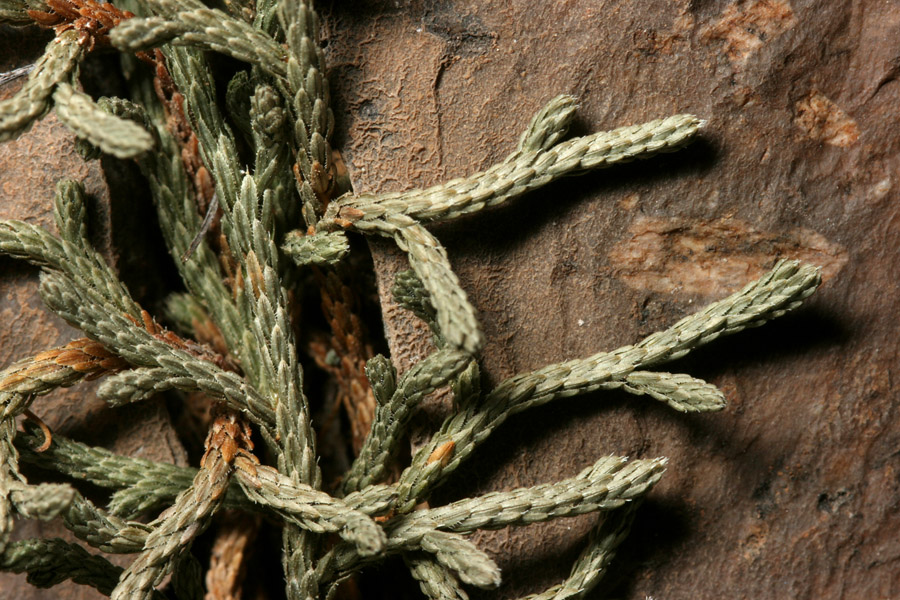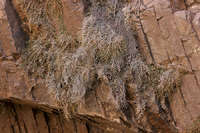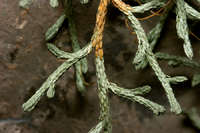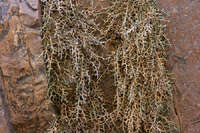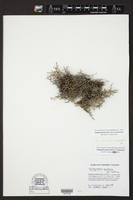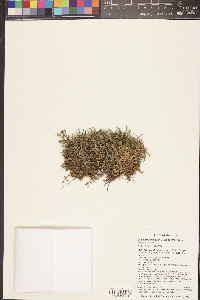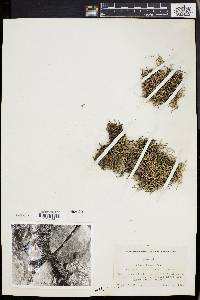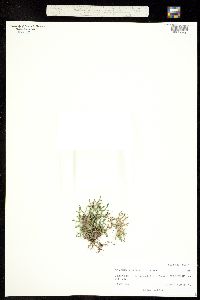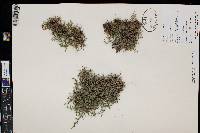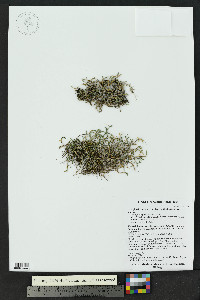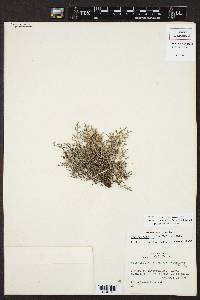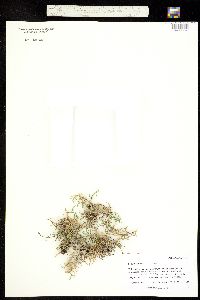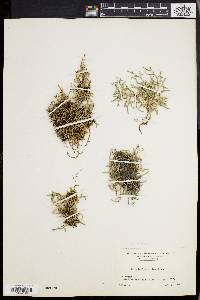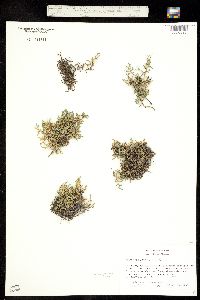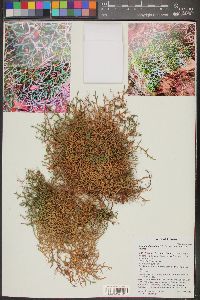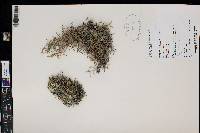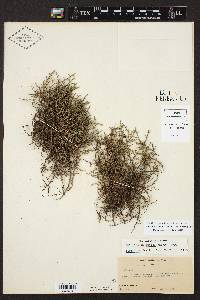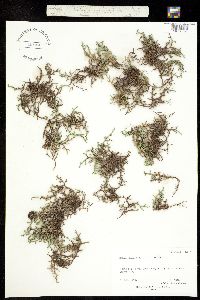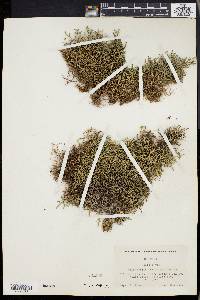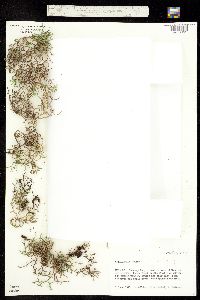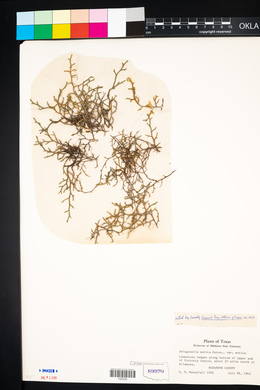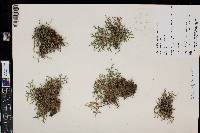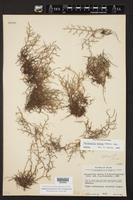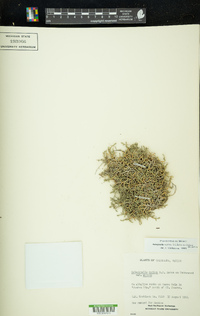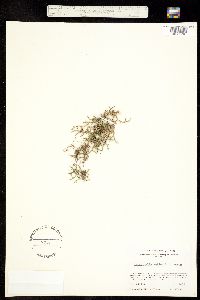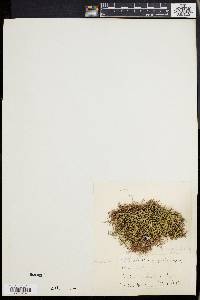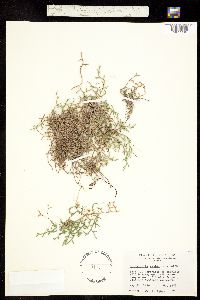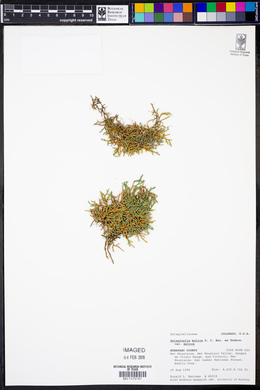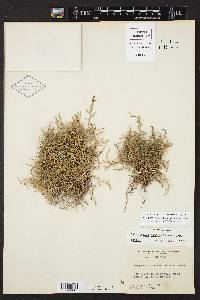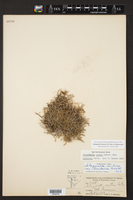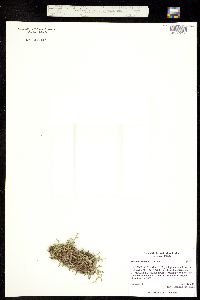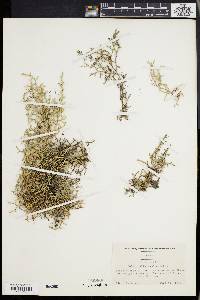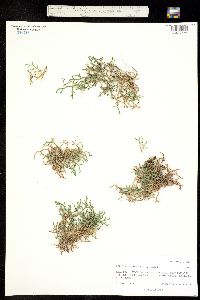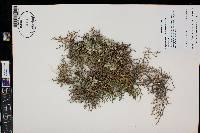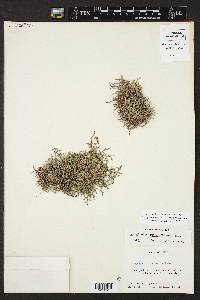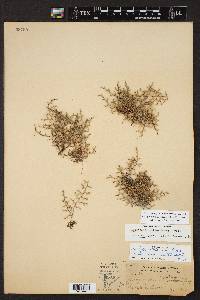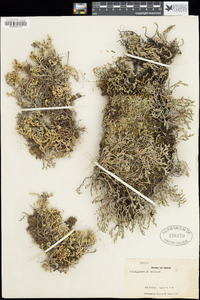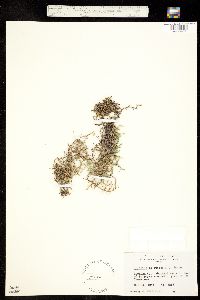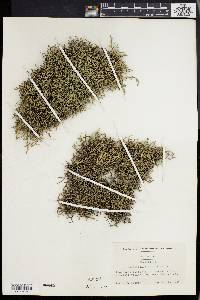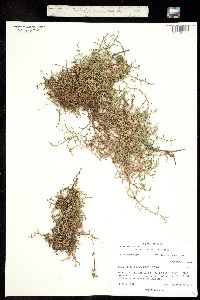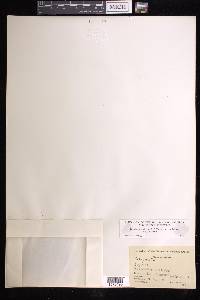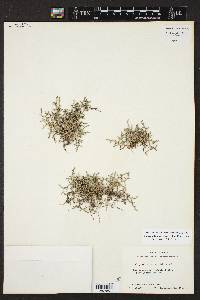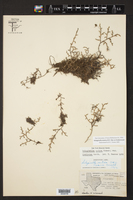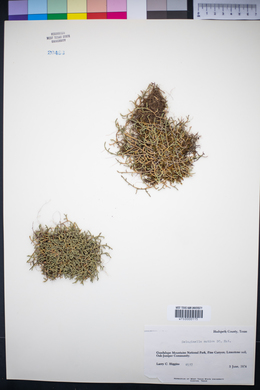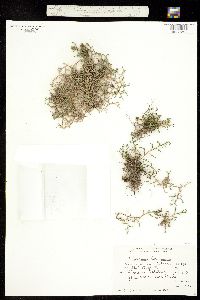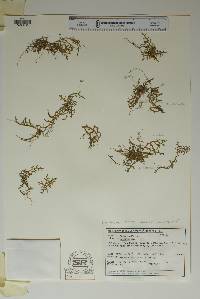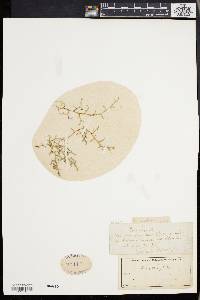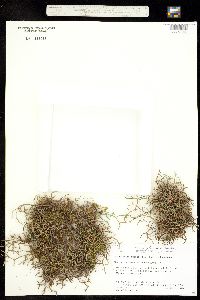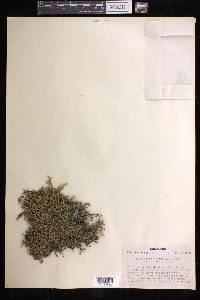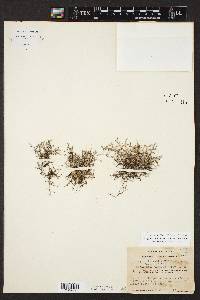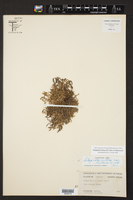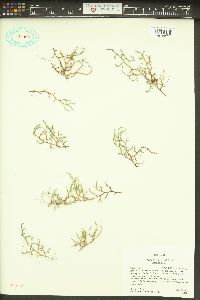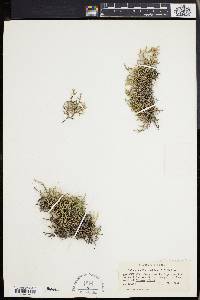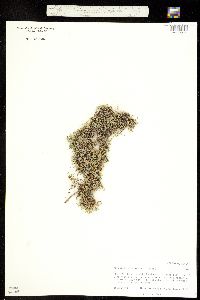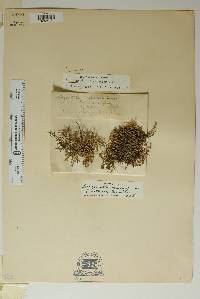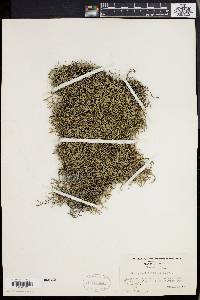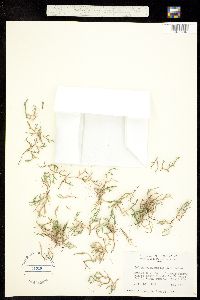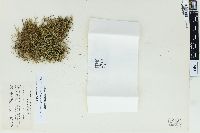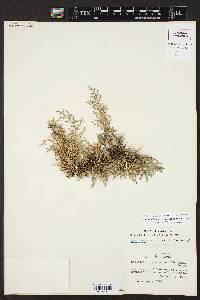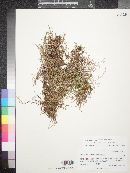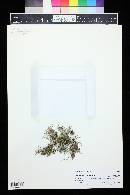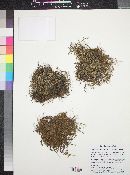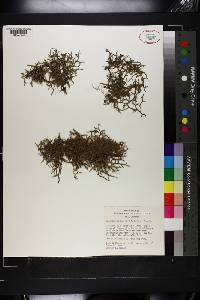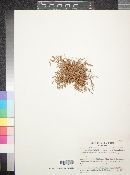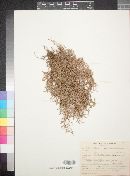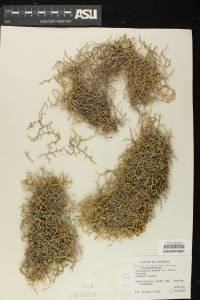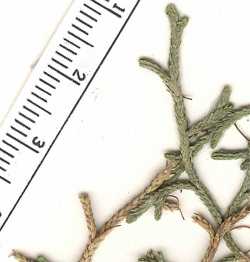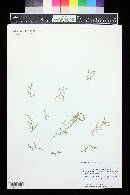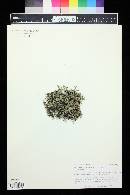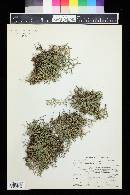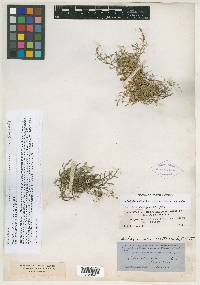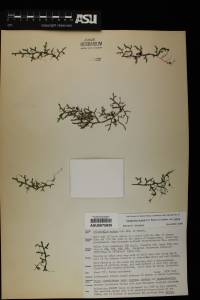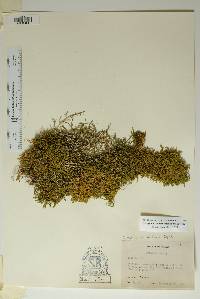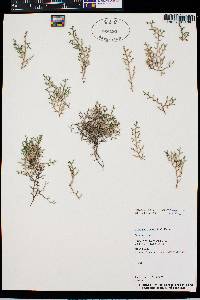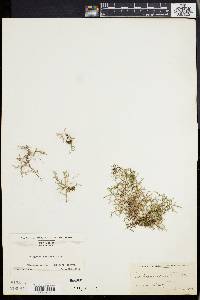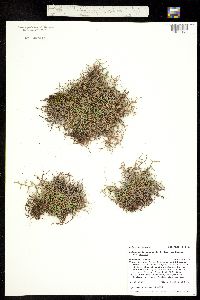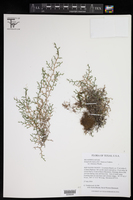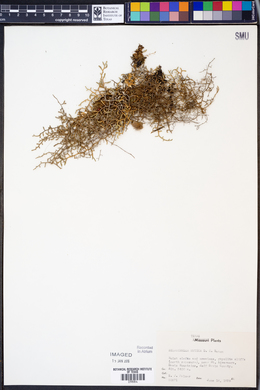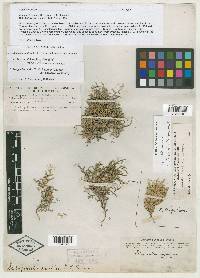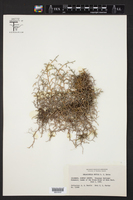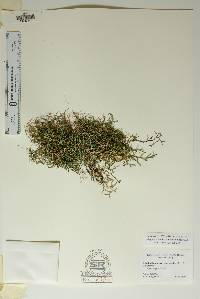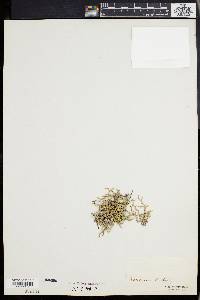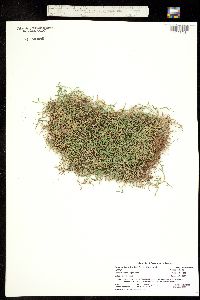Selaginella mutica
|
|
|
|
Family: Selaginellaceae
Blunt-Leaf Spike-Moss, more...bluntleaf spikemoss
|
Plants on rock or terrestrial, forming loose mats. Stems radially symmetric, long- to short-creeping, not readily fragmenting, ± regularly forked, without budlike arrested branches, tips straight; main stem indeterminate, lateral branches determinate, 1--2-forked. Rhizophores borne on upperside of stems, throughout stem length, 0.13--0.23 mm diam. Leaves monomorphic, in ± alternate pseudowhorls of 3, tightly appressed, ascending, green, lanceolate to linear-lanceolate or lanceolate-elliptic, 1--2 X 0.45--0.6 mm; abaxial ridges well defined; base rounded and adnate, sometimes slightly decurrent, pubescent or glabrous; margins ciliate to denticulate, cilia transparent, spreading or ascending, 0.03--0.17 mm; apex keeled, obtuse or slightly attenuate, nearly truncate in profile, blunt to short-bristled; bristle transparent to greenish transparent or whitish, smooth, 0.06--0.45 mm. Strobili solitary, (0.6--)1--3 cm; sporophylls ovate-lanceolate, ovate-elliptic, or deltate-ovate, abaxial ridges well defined, base glabrous, margins ciliate to denticulate, apex strongly to slightly keeled, short-bristled to blunt. 2 n = 18. Selaginella mutica , S . underwoodii (R. M. Tryon 1955; C. A. Weatherby 1943), and S . wallacei all have similar patterns of variation. Study is needed to assess to what degree such variability is caused by environmental or genetic factors. Within S . mutica , two rather distinct, morphologic extremes are recognized here as varieties. Many specimens having leaves with spreading, long, marginal cilia and a short, broken, apical bristle have been considered intermediate between the two varieties, but they belong in S . mutica var. mutica . Selaginella mutica may be one of the parent species of the putative hybrid species S . × neomexicana (see discussion). Selaginella mutica is often found growing in the same habitat with S . underwoodii , S . × neomexicana , and S . weatherbiana . According to R. M. Tryon (1955), where the two grow together, S . mutica mats gradually entirely replace mats of S . underwoodii over time. Selaginella mutica is sometimes confused with S . viridissima .
STEMS: monomorphic, the main stem prostrate, with prostrate to loosely ascending branches, not readily fragmenting when dry, the branch tips appearing straight when dry, forming loose mats. RHIZOPHORES: produced throughout. LEAVES: monomorphic, 1-2 mm long, narrowly lanceolate to narrowly elliptic-lanceolate, green to dark green when hydrated, the base adnate (differing in color from the stem) and more or less symmetrically rounded or narrowed, the tip bluntly or sharply pointed, with or without a seta, the margins short- to long-ciliate, sometimes mostly denticulate. STROBILI: 6-25 mm long, the sporophylls narrowly ovate to elliptic-ovate or ovate-deltate, narrowed to a blunt or sharply pointed tip with or without a short seta, the margins denticulate to ciliate. MEGASPORES: finely to relatively coarsely rugose-reticulate, orange. NOTES: 2 vars.; WY s to AZ and TX. NOTES: 2 vars.; WY s to AZ and TX. REFERENCES: Yatskievych, G. and M. D. Windham. 2009. Vascular Plants of Arizona: Selaginellaceae. CANOTIA 5 (1): 39-48. FNA 1993, VPAP (Yatskievych and Windham 2009), Heil et al. 2013, Allred and Ivey 2012 Common Name: bluntleaf spikemoss Rarity: G4G5 General: Spore-producing perennial herb, forming loose mats on rock or earth; stems prostrate and dichotomously branching throughout, the branches prostrate to loosely ascending; fine adventitious roots produced throughout. Leaves: Scale-like and densely spirally arranged, covering the stems and branches; blade narrowly lanceolate, 1-2 mm long, with a bluntly- to sharply-pointed tip and rounded base; margins ciliate (lined with hairs) and sometimes denticulate (finely toothed); leaves green to dark green when fresh, sharply different in color compared to the stems. Sporangia: The strobili (equivalent to an inflorescence) are short sections of stem, 1-3 cm long, located at branch tips, which have sporangia (spore-cases) in the leaf axils. The leaves (i.e. scales) that subtend the spornagia are called sporophylls, and in this species they are nearly identical to the rest of the scales except for being slightly wider (ovate) and keeled near the tip so that they wrap around the sporangia; sporangia are generally ovoid. Ecology: Found on rock outcrops, ledges, boulders, and cliffs, on various substrates, from 4,500-8,500 ft (1372-2591 m); spores June-August. Distribution: s WY south to e AZ, NM, w TX, and Chiuhuahua, MEX. Notes: Selaginella is a group of plants traditionally defined as fern allies. Like ferns, they are vascular, spore-producing plants. S. mutica forms a loose pile of stems which is most often anchored to cracks in rocks and can be found hanging on the sides of cliffs. It has tiny scale-like leaves which superficially resemble those of Juniper, Cypress, or Tamarix. It will be difficult to distinguish from other species of Selaginella without a dissecting scope, so make a good collection if you need a species determination. S. mutica is distinguished based on the morphology of the tiny scale-like leaves: the scales are fused to the stem at the base, sharply differentiated from the stem in color, and rounded at the base. The similar S. underwoodii has scales which are tapered at the base, decurrent on the stem, and the same color as the stem. Ethnobotany: Unknown Etymology: Selaginella is a diminutive of Selago, the ancient name for clubmoss, a related plant; mutica means blunt, alluding to the scales lacking a sharp pointed tip. Synonyms: None Editor: SBuckley 2012, AHazelton 2017 |

